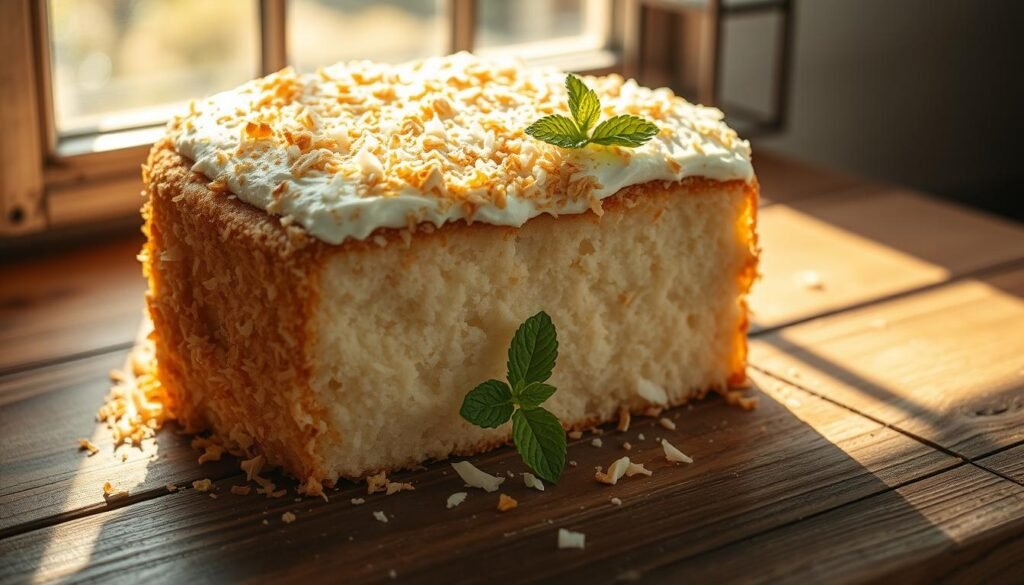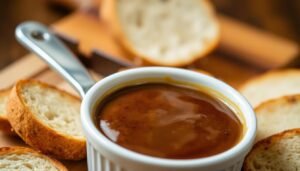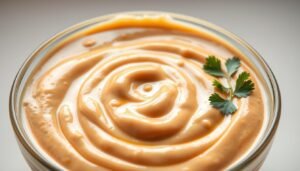Imagine a dessert so divine that it becomes the centerpiece of any gathering. Coconut cake is that dessert, with its tropical flavor and moist texture captivating the hearts of many.
I still remember the first time I tasted a truly exceptional coconut cake. It was at a summer barbecue, and the combination of the cake’s moistness and the flavorful coconut frosting was unforgettable.
In this article, I’ll share with you my favorite coconut cake recipe that promises to deliver a moist and flavorful dessert every time. With simple ingredients and straightforward steps, you’ll be on your way to creating an irresistible coconut cake.
Key Takeaways
- A simple coconut cake recipe that’s easy to follow.
- Tips for achieving a moist and flavorful coconut cake.
- The importance of using high-quality ingredients.
- Variations to the basic recipe for added flavor.
- How to frost and decorate your coconut cake.
Key Ingredients for the Perfect Coconut Cake
Making the perfect coconut cake starts with picking the best ingredients. The quality and type of ingredients greatly affect the cake’s taste, texture, and look.
Coconut: Fresh vs. Desiccated
Choosing between fresh and desiccated coconut changes the cake’s texture and flavor. Fresh coconut makes the cake moist, while desiccated coconut boosts the coconut taste.
Fresh Coconut: Fresh coconut is great for a moist, tender crumb. It’s best for cakes that need a strong coconut feel.
Desiccated Coconut: Desiccated coconut intensifies the coconut flavor without adding moisture. It’s perfect for cakes that should taste strongly of coconut.
Flour Choices: All-Purpose vs. Cake Flour
The flour you choose affects the cake’s texture and structure. All-purpose flour and cake flour have different protein levels, which changes the cake.
| Flour Type | Protein Content | Ideal Use |
|---|---|---|
| All-Purpose Flour | 10-12% | General baking, provides structure |
| Cake Flour | 6-8% | Delicate cakes, tender crumb |
Essential Baking Ingredients
Ingredients like coconut, flour, sugar, eggs, butter or oil, and baking powder are key. Each one is important for the cake’s taste, texture, and how it rises.
- Sugar: Adds sweetness and tenderness.
- Eggs: Provides moisture, richness, and structure.
- Butter or Oil: Contributes to moisture and flavor.
- Baking Powder: Leavening agent that helps the cake rise.
Optional Add-Ins for Extra Flavor
Adding optional ingredients like nuts, chocolate chips, or dried fruit can make your coconut cake even better. These extras can add flavor and texture.
“Adding a hint of tropical fruit like pineapple or mango can elevate the coconut flavor and add a delightful twist to your cake.”
Some popular add-ins include:
- Nuts (almonds, walnuts)
- Chocolate chips
- Dried fruit (cranberries, raisins)
Tools You’ll Need for Baking
Baking a perfect coconut cake needs more than a good recipe. You also need the right tools. The right equipment makes baking smooth, efficient, and fun.
Measuring Instruments
Getting your measurements right is key in baking. You’ll need a digital kitchen scale and measuring cups for dry and liquid ingredients. High-quality measuring instruments help avoid mistakes like too much flour or not enough sugar.
Mixing Bowls and Utensils
Mixing bowls and utensils are basic for baking. You’ll need big mixing bowls, a whisk, and a rubber spatula. A stand mixer is great for creaming butter and sugar. A hand mixer is good for smaller jobs.
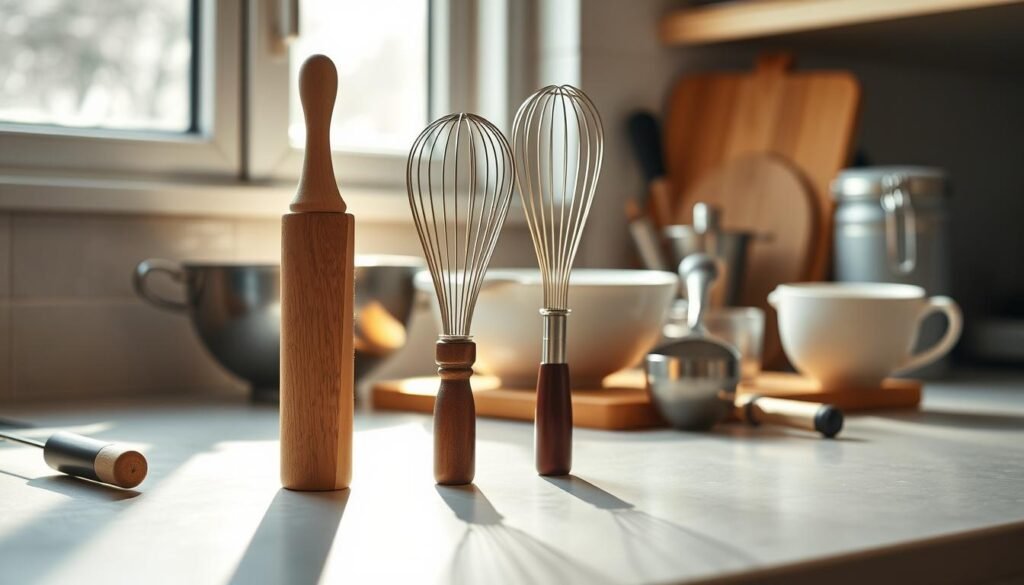
Baking Pans and Cooling Racks
The right pans and cooling racks are key for a perfect coconut cake. Use round cake pans, preferably non-stick, to avoid sticking. A cooling rack helps your cakes cool evenly, so they don’t get soggy.
| Tool | Purpose |
|---|---|
| Digital Kitchen Scale | Accurate measurement of ingredients |
| Measuring Cups | Measuring dry and liquid ingredients |
| Mixing Bowls | Combining ingredients |
| Whisk | Blending ingredients |
| Rubber Spatula | Scraping the sides of bowls |
| Round Cake Pans | Baking the cake |
| Cooling Rack | Cooling the baked cakes |
With these baking tools, you’re ready to bake your coconut cake with confidence.
Step-by-Step Instructions for Batter Preparation
Making the batter for a Coconut Cake is easy but needs focus. To get the batter right, just follow a few easy steps.
Creaming the Butter and Sugar
The first thing to do is creaming the butter and sugar until it’s light and fluffy. This step adds air to the batter, making the cake light and fluffy. Use room temperature butter for better results. For more tips, check out this chocolate chip banana bread recipe.
Incorporating the Eggs and Coconut Milk
After creaming the butter and sugar, it’s time to incorporate the eggs one at a time. Make sure each egg is fully mixed before adding the next. Then, add the coconut milk, which adds moisture and a rich coconut flavor.
Folding in the Dry Ingredients
The last step is folding in the dry ingredients, like flour, baking powder, and salt. Fold these ingredients gently to keep the batter light. These ingredients help the cake rise and give it structure.
By following these steps, you’ll make a batter that turns into a moist and tasty Coconut Cake.
Tips for Achieving Moistness in Your Cake
Getting a moist cake is all about a few simple tricks. These tips can turn a good cake into a fantastic one. Let’s dive into what makes a cake moist.
Importance of Room Temperature Ingredients
Room temperature ingredients are key for a smooth batter. They ensure your cake bakes evenly. I always let butter, eggs, and milk sit at room temperature for an hour before baking.
For more on ingredient preparation, check out this chocolate chip banana bread recipe. It shows how important it is to handle ingredients right.
How to Properly Measure Flour
Measuring flour correctly is crucial to avoid a dry cake. Use a digital kitchen scale for accuracy. If you don’t have a scale, the spoon-and-level method works well. This method prevents packing flour, which can lead to too much.
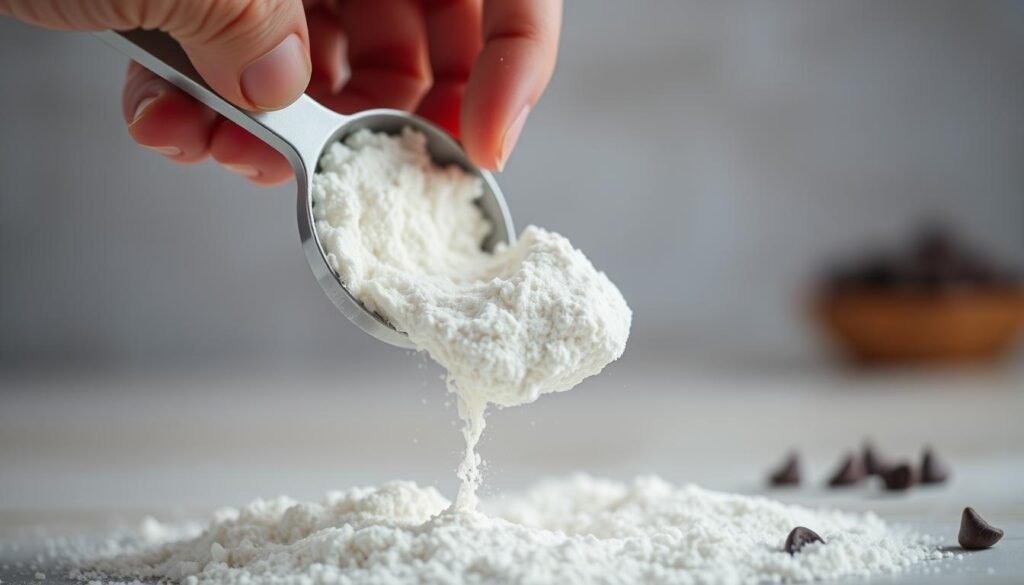
Adding Extra Coconut Milk
Coconut milk adds moisture and richness to your cake. A bit more coconut milk can keep it moist. But, don’t add too much to avoid a wet batter.
| Tips for Moistness | Benefits |
|---|---|
| Room Temperature Ingredients | Ensures even mixing and baking |
| Proper Flour Measurement | Prevents dryness from excess flour |
| Adding Extra Coconut Milk | Enhances moisture and richness |
By using these tips, you’ll bake a moist and tasty coconut cake. Remember, the details matter. So, take your time and enjoy the baking process.
Creating Delicious Coconut Frosting
To make your coconut cake even better, a great frosting is key. The right frosting can make your dessert look and taste amazing. It turns your cake into a real showstopper.
Classic Buttercream Frosting
A classic buttercream frosting is always a good choice. You’ll need unsalted butter, powdered sugar, and a bit of coconut extract. Start by creaming the butter until it’s fluffy. Then, add the powdered sugar slowly, beating until it’s smooth and creamy.
Coconut Cream Cheese Frosting
For a tangy twist, try a coconut cream cheese frosting. Mix softened cream cheese with unsalted butter, powdered sugar, and some coconut flakes. The cream cheese gives a rich, tangy taste that goes well with the coconut’s sweetness.
Incorporating Coconut Flakes
Adding coconut flakes to your frosting can make it more interesting. Just mix toasted coconut flakes into your buttercream or cream cheese frosting. It not only boosts the flavor but also looks great.
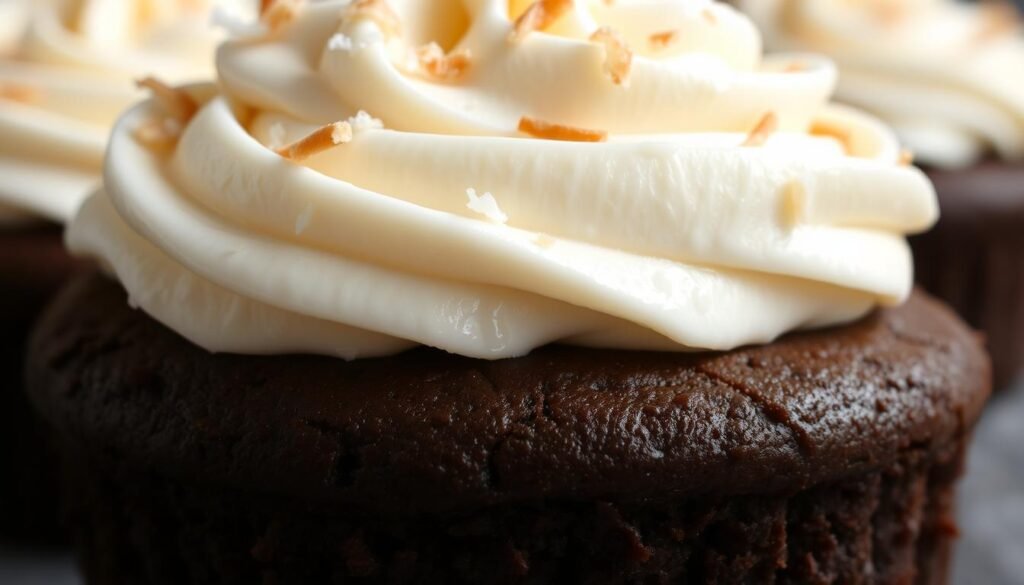
| Frosting Type | Main Ingredients | Flavor Profile |
|---|---|---|
| Classic Buttercream | Unsalted butter, powdered sugar, coconut extract | Sweet, creamy, coconut-forward |
| Coconut Cream Cheese | Cream cheese, unsalted butter, powdered sugar, coconut flakes | Tangy, rich, coconut-infused |
By picking the right frosting and adding coconut flakes, you can make your coconut cake unforgettable.
Assembling the Coconut Cake
To make your coconut cake, you must assemble it carefully. This step is key to a beautiful and tasty dessert.
Layering Techniques for Even Distribution
Layering your cake right is crucial. Start with a small frosting on the bottom layer to hold it. Then, add lots of frosting on top before adding the next layer. This keeps the cake stable.
Tips for Layering:
- Use a turntable to easily access all sides of the cake.
- Apply a thin layer of frosting on the sides to prevent crumbs from getting stuck.
- Chill the cake for a few minutes between layering to set the frosting.
Tips for Keeping Layers Stable
To keep layers stable, bake and cool each layer evenly. A cake leveler helps with even layers. A little frosting or ganache between layers holds them together.
The Importance of Leveling: Leveling your cake layers makes it stand straight and look professional. Use a cake leveler or a serrated knife for this.
Decorating Ideas for a Stunning Finish
Decorating your coconut cake is where you can show off your creativity. Use toasted coconut flakes, fresh flowers, or caramel for a stunning look. Keep it simple yet elegant to highlight the coconut flavor.
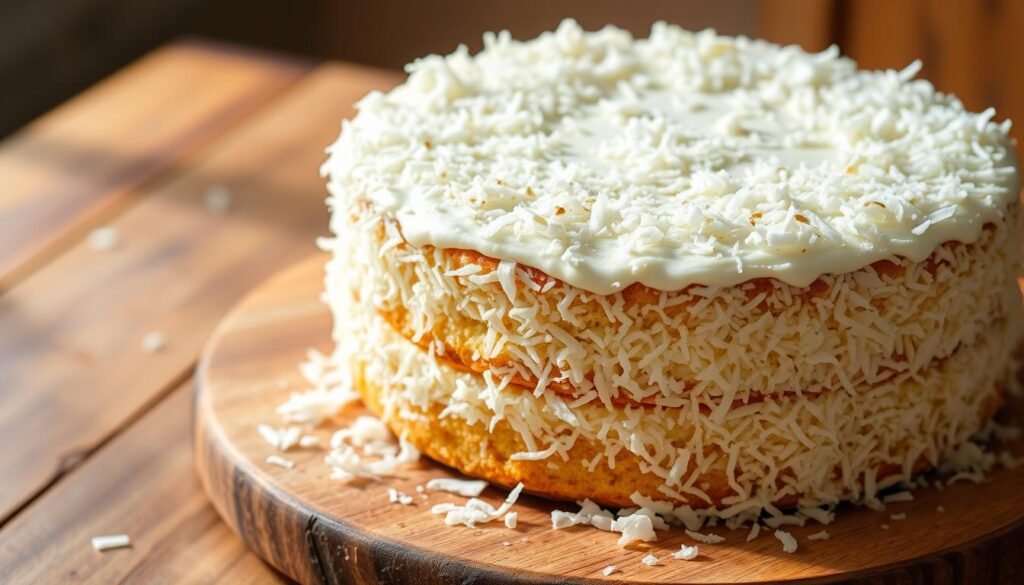
Here’s a simple table to help you decide on the decoration based on the occasion:
| Occasion | Decoration Idea |
|---|---|
| Birthday | Colorful sprinkles and a candle |
| Wedding | White chocolate shavings and fresh flowers |
| Holiday | Themed decorations like holly for Christmas or hearts for Valentine’s Day |
By following these tips and techniques, you can make a coconut cake that’s both delicious and beautiful.
Serving Suggestions and Pairings
Now that you’ve baked your Coconut Cake to perfection, let’s explore the best ways to serve and enjoy it. The right beverage and occasion can make this dessert even more special.
Best Beverages to Serve with Coconut Cake
Choosing the right drink to accompany your Coconut Cake can enhance its flavor. Here are some popular beverage options:
- Coconut water for a refreshing and tropical twist
- Milk or cream for a richer dessert experience
- Coffee or espresso for a delightful contrast
- Tea, such as chai or green tea, for a soothing pairing
For more ideas on pairing desserts with beverages, you might enjoy exploring how to enjoy banana bread and its serving suggestions.
Ideal Occasions for Coconut Cake
Coconut Cake is a versatile dessert suitable for various occasions. Some ideal times to serve it include:
- Birthday parties for a celebratory touch
- Weddings as a tropical-themed dessert
- Holiday gatherings, such as Easter or Christmas
- Casual get-togethers or afternoon tea
How to Store Leftover Cake
To keep your Coconut Cake fresh, proper storage is essential. Here are some tips:
- Store the cake in an airtight container at room temperature for up to 3 days.
- For longer storage, consider refrigerating the cake, but be sure to bring it to room temperature before serving.
- You can also freeze the cake for up to 2 months; just thaw it properly before serving.
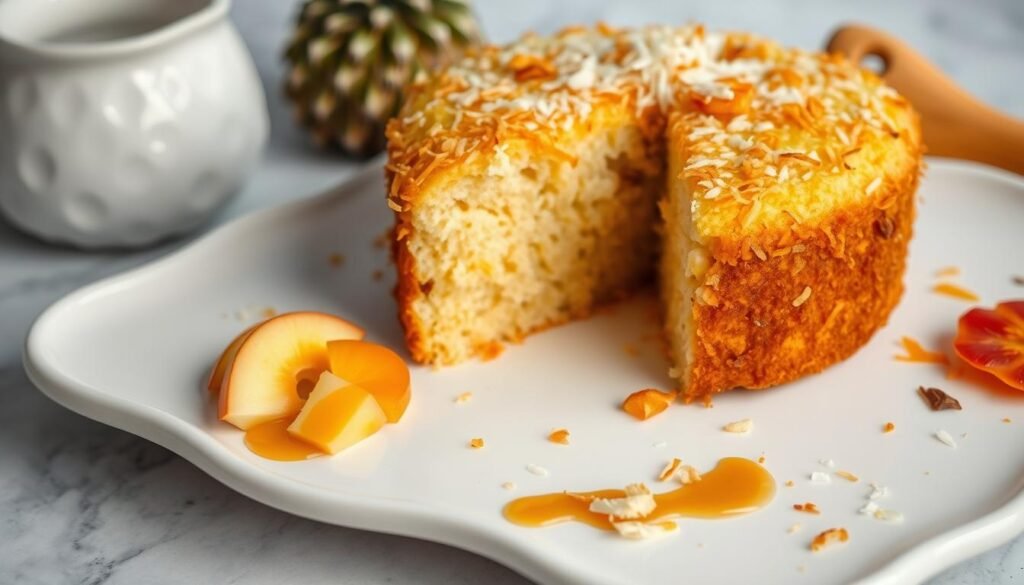
Creative Variations on Coconut Cake
Exploring beyond the classic coconut cake recipe, we can create unique flavor combinations. This lets bakers experiment with different ingredients. It results in innovative desserts for various tastes and dietary needs.
Tropical Coconut-Pineapple Fusion
One exciting variation is the tropical coconut-pineapple fusion. Adding pineapple juice to the batter and topping it with toasted coconut flakes and fresh pineapple chunks creates a tropical dessert. This mix of coconut’s richness and pineapple’s sweetness is ideal for summer gatherings or luau-themed parties.
Chocolate and Coconut Combination
Chocolate lovers will enjoy the combination of chocolate and coconut. Adding cocoa powder to the batter and layering the cake with chocolate ganache or chocolate buttercream frosting makes it decadent. The contrast between chocolate’s richness and coconut’s subtlety is delightful. For more unique dessert combinations, check out other creative recipes that blend unexpected flavors.
Vegan Coconut Cake Options
Vegan bakers can enjoy coconut cake with a few simple substitutions. Using plant-based milk, vegan butter, and egg replacers makes a vegan coconut cake. You can also use coconut oil and coconut milk to enhance the coconut flavor. This makes it a great option for those with dietary restrictions.
These creative variations on coconut cake offer something new for the taste buds. They cater to various dietary needs and preferences. Whether you’re in the mood for something tropical, chocolatey, or vegan, there’s a coconut cake variation to satisfy your cravings.
Troubleshooting Common Baking Issues
Baking can sometimes go wrong, even with a great recipe. Knowing how to fix these problems is crucial. Whether you’re experienced or new to baking, knowing how to solve common issues can save your coconut cake.
Dry Cake: Causes and Solutions
A dry cake usually comes from overmixing or baking too long. To avoid this, mix ingredients just until they’re combined. Also, watch your cake closely while it bakes. If it’s dry, try moistening it with syrup or coconut frosting.
Tips to prevent dryness:
- Use room temperature ingredients for even mixing.
- Stop mixing as soon as ingredients are combined.
- Check your cake often towards the end of baking to avoid overcooking.
Cake Sinking: What Went Wrong?
A sinking cake might be due to underbaking or sudden temperature changes. Make sure your cake is fully baked before taking it out of the oven. Also, avoid opening the oven door too often. If your cake sinks, you can fix it by filling the sunken area with frosting or whipped cream.
Frosting Not Setting: Fixes
Frosting that doesn’t set can be a problem. If it’s too runny, chilling it can help it set. If it’s too stiff, letting it sit at room temperature can soften it. You can also adjust the liquid or powdered sugar in your frosting to get the right texture.
Adjusting frosting consistency:
- Add a small amount of powdered sugar to thicken.
- Add a small amount of coconut milk or cream to thin.
- Refrigerate or let sit at room temperature to adjust consistency.
By understanding these common baking issues and how to fix them, you’ll be able to make a delicious coconut cake. It will impress your friends and family.
Conclusion: Your New Favorite Coconut Cake Recipe
Now you know all about coconut cake. Follow the steps in this article to make a moist and tasty coconut cake. It’s sure to wow everyone.
Key Takeaways
We’ve covered the basics for the perfect coconut cake. You’ll learn about the right coconut, texture, and more. For more ideas, check out the Coconut Chocolate Chip Banana Bread recipe.
Experiment and Enjoy
Try new things with the coconut cake recipe. Add your own flavors and ingredients. Baking is fun, whether it’s for a special event or just because. So, be creative and enjoy what you make!

